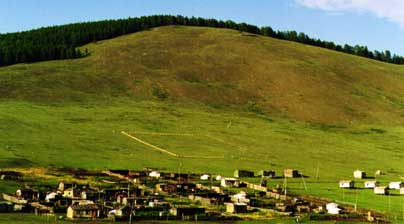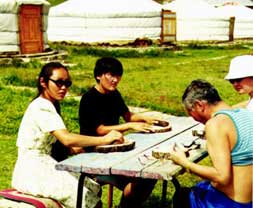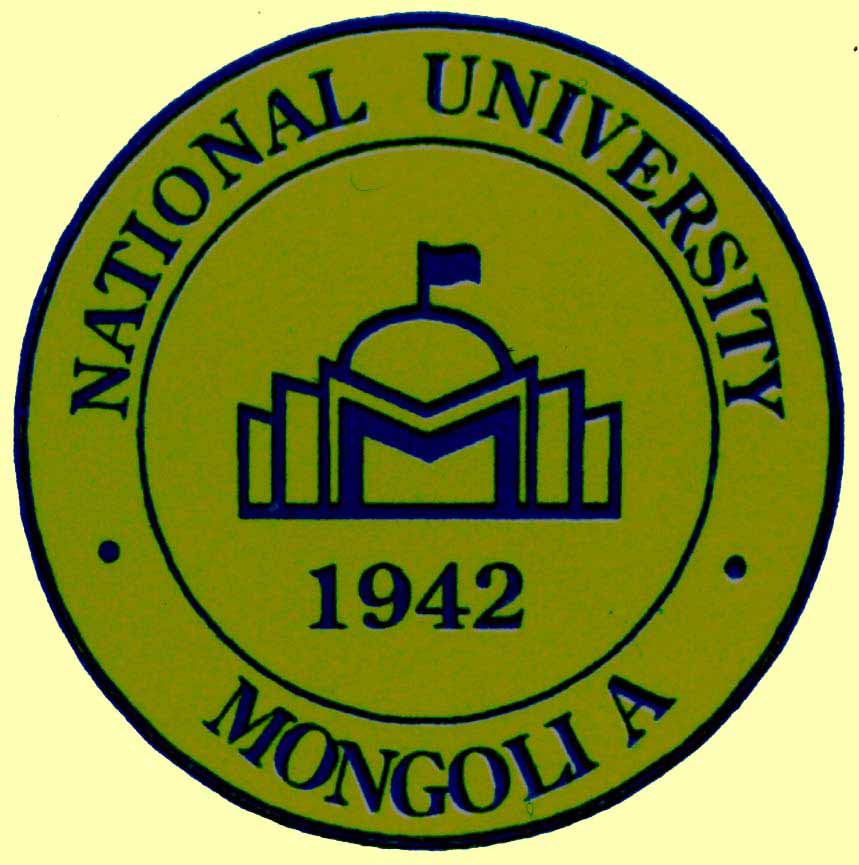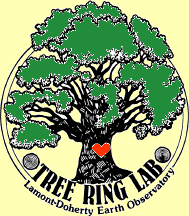|
Introduction:
Following the opening ceremony at the National University of Mongolia, the fieldweek was held at a tourist camp on the outskirts of Ulaanbaatar, the capital of Mongolia. The forest on Gunt Uul (Uul = Mountain) is designated a green or recreational forest.

|
Gers at a tourist camp just south of Gunt Uul.
|
The goal of the fieldweek was to introduce the science of tree-ring analysis to young Mongolian researchers using the format set by the North American and European dendro fieldweeks. Mongolian students and young scientists representing 4 institutions participated.
The teaching goals of the week were to introduce the importance of site selection, skeleton plotting and cross-dating. Site selection is important because a researcher needs to select the proper site to address the specific question they may be asking. While in the field, several examples of good sites that addressed certain questions were given. Skeleton plotting is a graphical method to crossdate samples. Crossdating allows the identification of the exact year in which each ring was formed by matching ring-width variations among trees growing in the same area.
Classroom lectures were held on:
- The 3 R's of Tree-Ring Analysis: Site Selection, Cross-dating, and Detrending
- The Science and Art of Skeleton Plotting
The students also attended nightly lectures on:
- The History of Mongolian Dendrochronology Research
- Applications of Dendrochronology
- Stand History of a Longleaf Pine Ecosystem (showing an example of
...... a dendroecological application)
- Results of the MATRIP Project
- Potential Problems in Mongolia to be Studied Using Tree-Ring Analysis
- Eastern United States Old-Growth Forests (since many of the students
...... were forest resource majors, this talk was structured to introduce
...... them to forests of hardwood and softwood composition [unusual in
...... Mongolia] and the concepts of single tree selection and ecosystem
...... management based on disturbance regimes)

|
The full range of sample preparation, from core mounting
to fine sanding, was taught.
|
And, of course, the students learned the art of sanding, sanding and more sanding!
Two groups were formed to study dendroecology and dendroclimatology.
The first group, Team Magic Ring led by Dr. Baatarbileg Nachin, used tree-ring analysis to study the ecological forest history. They set up a plot, created a stem map, and collected cookies from stumps, fire scars and exposed roots.
The second group, The Treeline Nine led by Dr. Chemultin Dugarjav and Neil Pederson, studied climate and tree growth. A treeline created by a southern aspect (hypothesized to be a moisture limitation), dominated by Scots pine [Pinus sylvestris] and Siberian larch [Larix sibirica], allowed the opportunity to study the growth history of these species along a climatological and ecological boundary.
On Friday the 29th, a fieldweek dinner was held in celebration of all of the hard work. A traditional meal of mutton and potatoes cooked by red hot rocks in a sealed container was served. After dinner, Mongolian folk songs about birch and pine trees, rivers and the landscape were sung.
On Saturday the 30th, poster presentations of fieldweek results were presented by the participants at the National University of Mongolia. Afterwards, each student received a certificate of achievement and Polaroid photos of themselves at work and a group picture.
A special note: one of the highlights of the fieldweek was the press coverage. The national TV news organization covered the opening ceremony and made a follow up visit midweek. In all, dendrochronology was reported on the nightly national news twice and once on the radio. A 20 minute special on Mongolian tree-rings is being planned for TV.
Word trickled back to the fieldweek that there was great interest in tree-rings throughout the country (Mongolians are faithful news watchers). It is clear that Mongolian dendrochronology is growing like a Siberian pine sapling!
|

